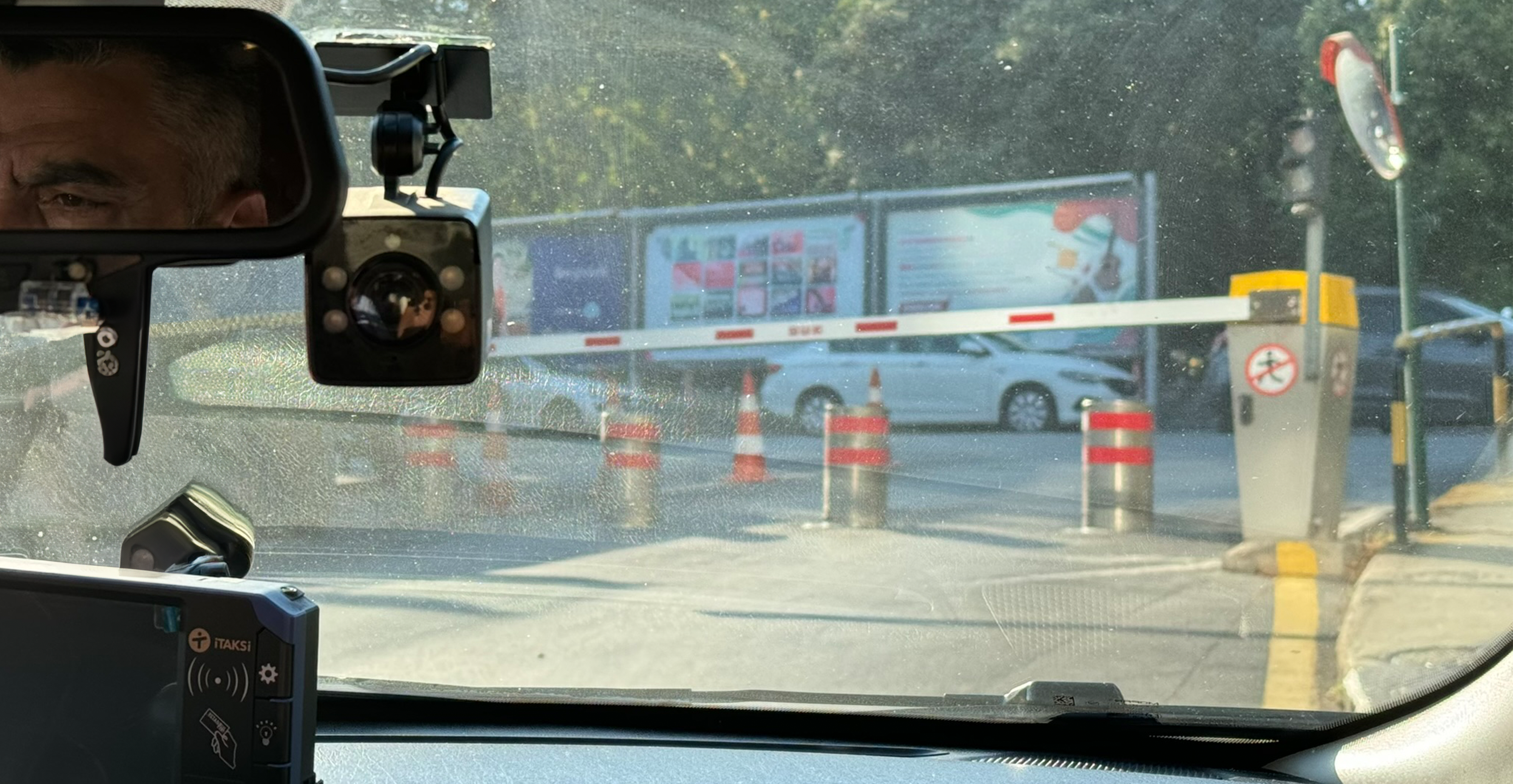
A vehicle approaches your facility and encounters this view of your entrance. Your security team is obviously ready to vet vehicles and their occupants before allowing them onto your campus. An appropriate gate is in place. Bollards are in ready position. Under-vehicle scanning systems are ready to evaluate the chassis of the vehicle. The license plate on the vehicle has been scanned by cameras and compared to available data bases.
However, what happens if the vehicle is denied access? Do you have to let them enter in order to have them turn around? Make them back up onto the street? What if they are blocked in by more vehicles waiting behind them?
The rejection lane...
In the security consulting and engineering business, every measure is taken to ensure the safety and integrity of protected spaces. One crucial aspect of perimeter security at sensitive facilities such as corporate campuses, pharmaceutical campuses, critical infrastructure sites, military bases, government buildings, and even commercial complexes like data centers is the implementation of vehicle rejection lanes. To the uninitiated, this term might evoke images of traffic violations or parking control, but its implications for security are far more significant.
What is a Vehicle Rejection Lane?
A vehicle rejection lane is a specially designed route within a security checkpoint that allows for the safe and efficient removal of a vehicle that has been deemed a threat or does not meet the entry criteria. This could be due to a variety of reasons, such as a failure to provide proper identification, the detection of suspicious items during an inspection, or behaviors that raise concerns among security personnel.
Design and Functionality
Vehicle rejection lanes are typically situated alongside the regular inspection or entry lanes, enabling security teams to direct a vehicle away from the secure area without causing undue delay to other entrants. These lanes are engineered to lead vehicles to a separate, isolated area where further investigations can be conducted away from the main traffic flow, thus minimizing potential risks.
Why Are Vehicle Rejection Lanes Important?
1. Mitigating Threats: The primary purpose of a rejection lane is to mitigate potential threats quickly. By diverting a vehicle that may pose a risk, security teams can prevent possible harm to facilities and individuals within the secure perimeter.
2. Maintaining Efficient Flow of Traffic: High-security facilities can experience significant vehicle throughput. A rejection lane ensures that legitimate traffic isn't unduly held up by security concerns, helping to maintain the flow of vehicles and reducing congestion that could become a security concern in itself.
3. Providing a Controlled Environment for Further Investigation: Once a vehicle is in a rejection lane, it can be scrutinized more thoroughly without the pressure of a queue forming behind it. This allows for a careful, measured approach to any potential threat, ensuring that decisions are not rushed.
4. Ensuring Safety of Personnel and Infrastructure: In the event that a vehicle contains a bomb or other hazardous material, having it in an isolated lane far from crowds and critical infrastructure minimizes the potential damage that could be caused by an explosion or release of harmful substances.
5. Deterrence: The mere presence of such security measures acts as a deterrent to those who might have nefarious intentions. Knowing that there is a system in place to identify and segregate suspicious vehicles can discourage attempts to breach security.
OUR TAKE ON THE TOPIC
Vehicle rejection lanes are an indispensable feature of modern security infrastructure design and implementation. Their presence signifies a well-thought-out plan to protect people, property, and sensitive information. The effective use of these lanes demonstrates a proactive approach to security, combining rigorous procedures with the flexibility required to adapt to dynamic threats. It's a subtle reminder that security is not just about the barriers we see but also about the sophisticated strategies working seamlessly in the background to ensure our safety.
With all of that said, proper planning must occur that allows for ample real estate to implement a rejection lane that not only keeps unauthorized vehicles out of the secure zone, but also allows them to turn around safety without creating a traffic hazard behind them for other cars trying to enter or vehicles passing by on the public access road.
Remember, keeping unauthorized vehicles and visitors off of your property is crucial. Don't miss out on the opportunity to enhance your understanding of this concept by tuning into our informative on-demand webinar. Access the on-demand webinar here >>
FREE: PHYSICAL SECURITY RISK ASSESSMENT CONSIDERATIONS GUIDE
We understand the challenges that security professionals face in securing their facilities and creating a safe environment within their budget. We also recognize the difficulty in finding the right resources and expert advice to achieve this mission.
That's why we're excited to announce the release of our considerations guide, designed specifically to help security professionals conduct their own in-house security risk assessment.
This comprehensive guide aims to assist you in identifying any missing or inadequate physical security measures that may compromise the safety and security of your assets, people, property, and critical business functions. While we highly recommend consulting with a third-party expert like Theseus Professional Services in certain cases, this guide will empower you to take a proactive approach to assess and address security risks within your organization.
The findings of a security risk assessment play a vital role in measuring and communicating the level of risk to your organization. By following the guidelines outlined in this guide, you can enhance the overall security of your facility while staying within your budget.
We believe that knowledge is power, and we're committed to providing you with valuable resources to help you achieve your security goals. Download our considerations guide today and take control of your facility's security.
- Process Evaluation
- Threats
- Vulnerability Assessment Highlights
- Electronic Security Systems Considerations
- Site Considerations
- Building Entrances and Exits
- Common Functional Areas
- Building Envelope
- Utilities and Building Services
- Building Systems





